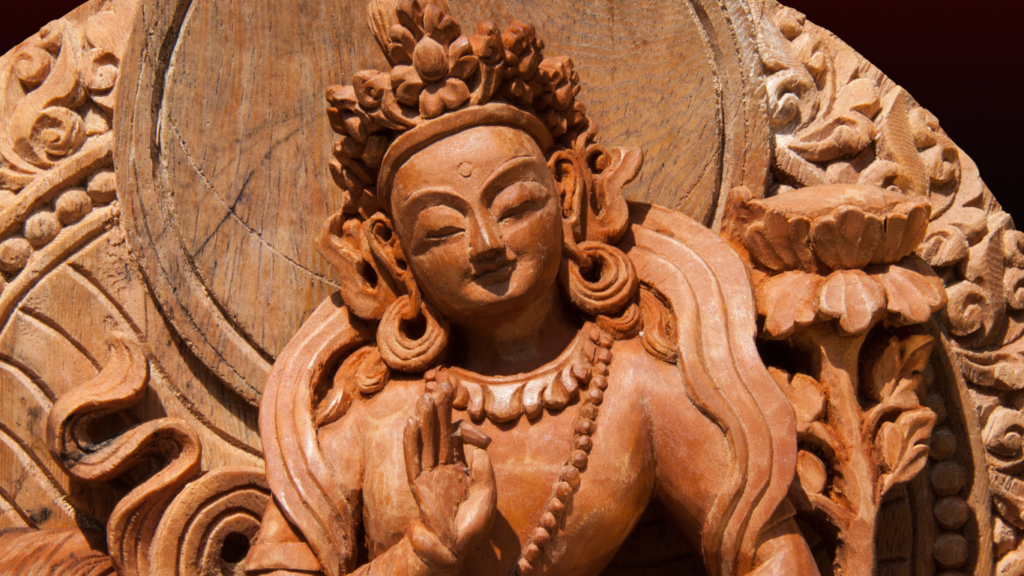Perched on a hilltop in Shimla, Tara Devi Temple is a quiet escape that feels like a hug from nature and faith. Surrounded by pine forests and Himalayan views, this 250-year-old shrine to Goddess Tara draws devotees and travelers seeking peace. Its wooden carvings and golden idol glow with history, while the cool mountain air soothes your soul. Whether you’re praying, hiking, or just soaking in the scenery, Tara Devi offers a mix of calm and wonder.
Why Tara Devi Temple Feels Like Home
Tara Devi Temple sits at 1,851 meters above sea level, 11 km from Shimla, wrapped in green forests. Dedicated to Goddess Tara, a form of Kali, it’s a place where prayers feel heard. The temple’s Pahari-style wooden carvings and serene vibe make it special, offering a break from city noise. Devotees believe Tara, the “Goddess of Stars,” grants wishes, especially during festivals like Navratri. The hike to the temple through pine-scented trails is refreshing, and the Himalayan backdrop is breathtaking. It’s not just for worshippers—tourists love the views, photographers chase the perfect shot, and families enjoy the calm. Sunday langars, where free food is shared, add a community touch. Visiting feels like finding a quiet corner of the world where faith, nature, and history blend, leaving you lighter and happier.
The Story Behind Tara Devi Temple
The temple’s history goes back over 250 years, tied to the Sen Dynasty of Bengal. Legend says King Bhupendra Sen, a Tara devotee, dreamt of the goddess asking for a temple on Tara Parvat. He donated 50 bighas of land and built it around 1766, placing a wooden idol inside. Later, King Balbir Sen had a vision of Tara wanting a hilltop shrine, so he crafted an Ashtadhatu idol (eight-metal mix) in 1825. The idol, carried by an elephant named Shankar, was installed with grand rituals. Rebuilt in 2018 with Rs. 6 crore, the temple kept its Pahari charm, using gold and silver for decor. Tara, one of the ten Mahavidyas in Hinduism, is also revered in Buddhism, making the temple a bridge of faiths. This rich past, woven with devotion and dreams, makes every visit feel like stepping into a sacred tale.
Things to Do at Tara Devi Temple
Tara Devi Temple offers more than prayers—it’s a place to connect with nature and culture. Start by visiting the main shrine to see the golden Tara idol and intricate woodwork. Join the morning or evening aarti for a soulful experience, with bells and chants filling the air. The trek from Shoghi, about 6 km, is a scenic adventure through forests, perfect for nature lovers. During Navratri or Dussehra, the temple buzzes with fairs and feasts, drawing crowds. Sit on the hilltop to enjoy Himalayan views or snap photos of the lush valleys. Nearby, the Shiv Bavdi temple adds a spiritual stop. Sunday langars let you share free meals with devotees, feeling like family. Whether you’re meditating, hiking, or soaking in the festive vibe, Tara Devi keeps you engaged with its blend of faith, beauty, and community warmth.
Joining Aarti and Langar
The temple’s aarti is a heartwarming ritual. Morning aarti starts at 7:00 AM, and evening aarti is at 6:00 PM, lasting 20 minutes. Priests chant mantras as lamps light up the shrine, creating a peaceful glow. It’s free to join, but arrive early for a good spot. On Sundays and Tuesdays, langar serves free prasad like dal and rice, often sponsored by devotees whose wishes came true. You can donate Rs. 50-100 to support it. Dress modestly—no shorts—and remove shoes before entering. The langar, held outdoors, feels like a community picnic, with locals sharing stories. These moments of prayer and shared meals make you feel connected to the temple’s spirit, leaving you with a warm, grounded feeling.
Exploring Festivals
Festivals at Tara Devi Temple are lively and joyful. Navratri, especially Durga Ashtami, brings fairs with music, stalls, and processions. Dussehra sees thousands join feasts, booked years in advance. The temple glows with lights, and devotees offer flowers and sweets. Chaitra Navratri in spring is another big event, with special poojas. Check shimlatourism.co.in for 2025 dates, as crowds swell during these times. Book hotels early, as Shimla fills up. The festive energy, with hymns and shared meals, is contagious, even for tourists. Wear comfy shoes for walking, and respect temple rules—no leather items. These celebrations let you dive into Himachal’s culture, making your visit a colorful memory.
Planning Your Visit to Tara Devi Temple
Getting to Tara Devi Temple is easy and rewarding. It’s open daily from 7:00 AM to 6:30 PM, with no entry fee. From Shimla (11 km), take a taxi (Rs. 300) or bus (Rs. 20) via Kalka-Shimla Highway. The nearest railway is Tara Devi Station (7 km), and Jubbarhatti Airport is 22 km away. A 4-km trek from Tara Devi Station or 6 km from Shoghi adds adventure. October to March offers cool weather, but avoid heavy snow or rain for safety. Stay in Shimla at budget hotels (Rs. 1000-3000). Carry water, snacks, and a jacket, as it gets chilly. No leather items are allowed, so check your bags. With these tips, your trip will be smooth, letting you focus on the temple’s peace and stunning views.
How to Reach Tara Devi Temple
From Shimla’s Old Bus Stand, it’s a 30-minute drive (11 km) on NH22 to Shoghi, then a 6-km road to the temple. Buses from Shimla to Shoghi cost Rs. 15-20, and autos from Shoghi are Rs. 100-200. Trains from Kalka to Tara Devi Station (Rs. 50-100) are scenic, followed by a 4-km walk or taxi (Rs. 150). From Jubbarhatti Airport, a cab is Rs. 500-800. The road has sharp turns, so hire skilled drivers. Parking costs Rs. 20, but spaces are limited. Start early to avoid crowds and enjoy cooler weather. The journey, with pine forests and mountain views, feels like a mini-adventure, setting the tone for a peaceful visit.
Nearby Attractions
Tara Devi Temple pairs well with Shimla’s gems. Shiv Bavdi, a nearby Shiva temple, is a 10-minute walk, offering quiet prayers. Sankat Mochan Temple (8 km) is a Hanuman shrine with city views. In Shimla, explore The Ridge (12 km) for colonial charm or Mall Road for shopping and cafes. Kufri, 25 km away, has a zoo and winter sports. A taxi for a day trip costs Rs. 1000-2000. Try local food like chana madra at Shimla cafes. These spots mix spirituality, history, and fun, making your trip diverse. Start at the temple, then head to Shimla or Kufri for a full day of exploring.



